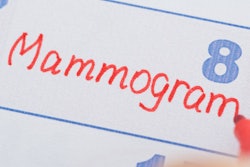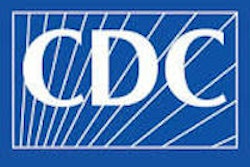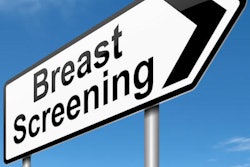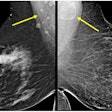A team led by Dr. Ashley Roark compared the added cancer yield and performance of screening breast MRI in high-risk women who had been screened with DBT versus digital mammography. The study included 4,418 screening breast MRI exams: 2,127 of these were performed with a negative DBT exam in the previous year, and 2,291 were performed with a negative mammography exam in the previous year. Roark's group calculated the cancer detection rate and positive predictive values for each set of images.
In the DBT group, MRI had an added cancer yield of 16 cancers per 1,000 screens. In the mammography group, MRI had an added cancer yield of 11 cancers per 1,000 screens. Roark and colleagues did not find significant differences in cancer detection before or after adjusting for differences in patient demographics such as age, exam indication, breast density, or presence of prior MRI exam.
Positive predictive values were higher for DBT than mammography: Positive predictive value for recall was 22%, compared with 15%; positive predictive value for cancers detected after a biopsy was recommended was 33%, compared with 23%; and positive predictive value for biopsy was 35%, compared with 28%.
Of the cancers found in the DBT group, 79% were invasive, and of these, 74% were less than 1 cm in size and 85% were node-negative.
What's the bottom line? Breast MRI still has a supplemental benefit, the researchers concluded.
"In the modern era of screening mammography with DBT, MRI continues to be an important supplemental screening modality for high-risk women and detects otherwise occult early-stage invasive cancers," they wrote.




















